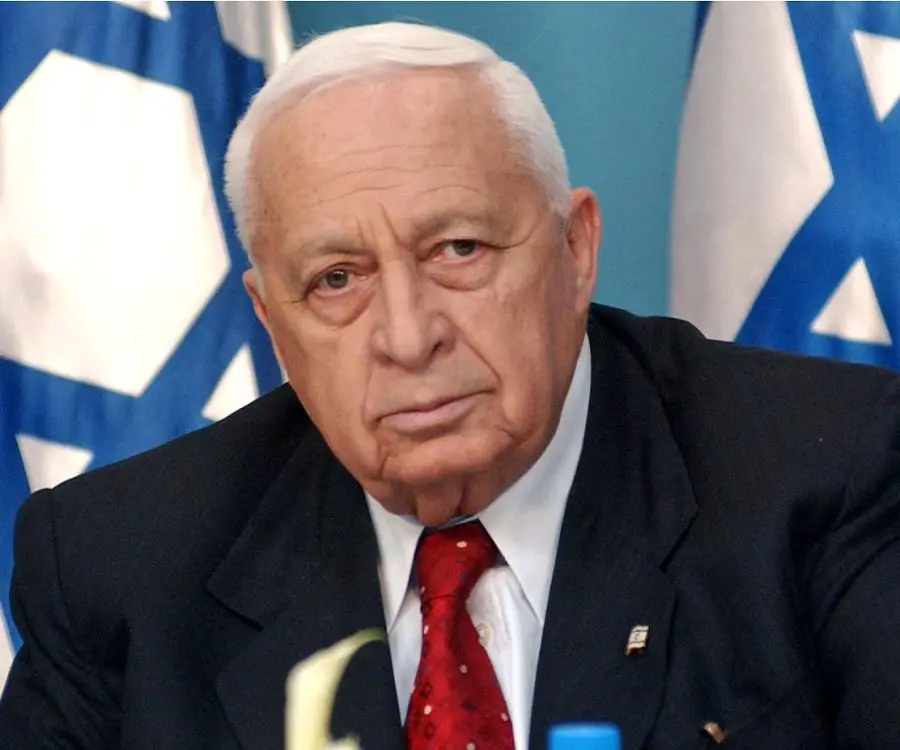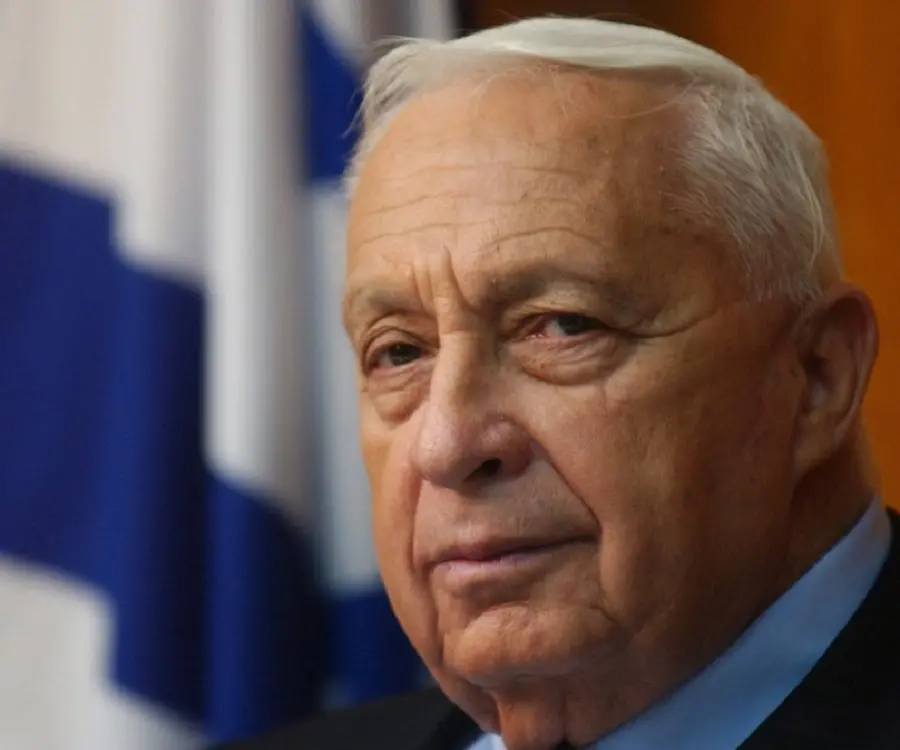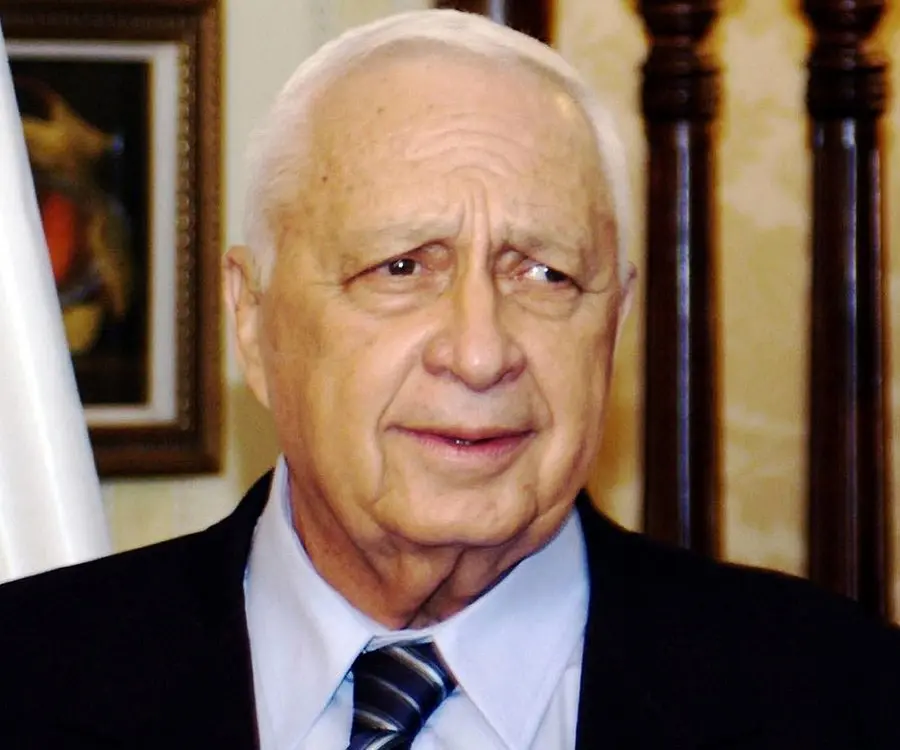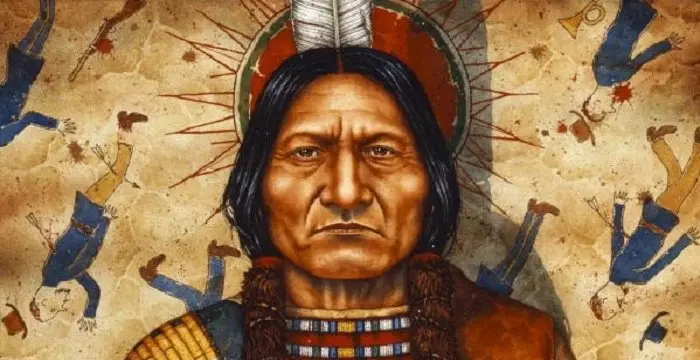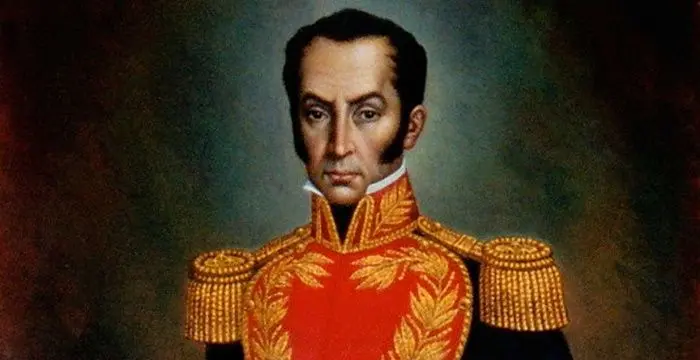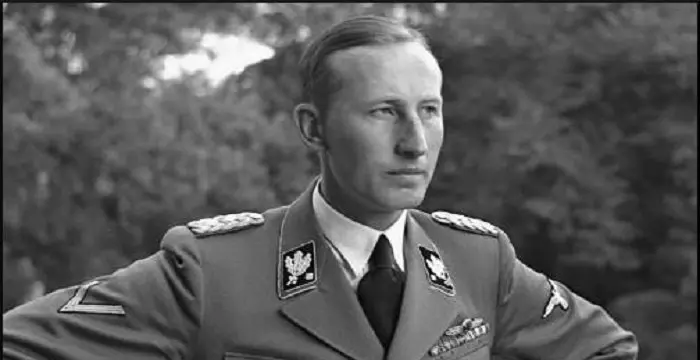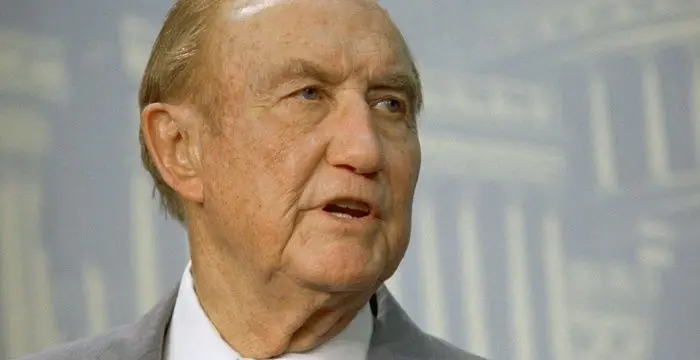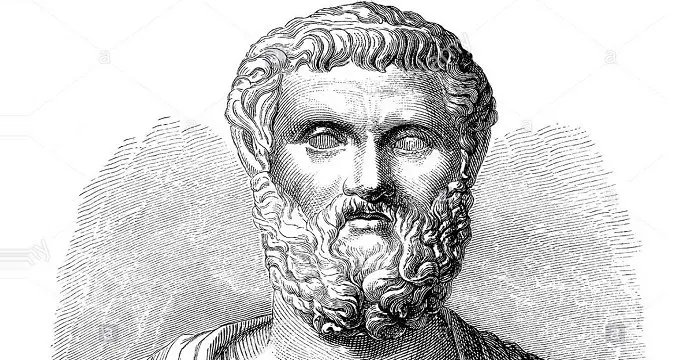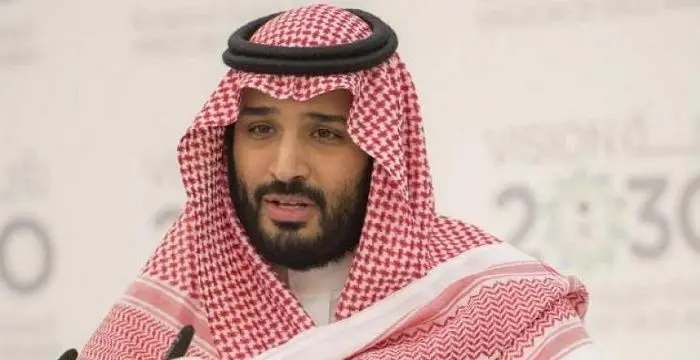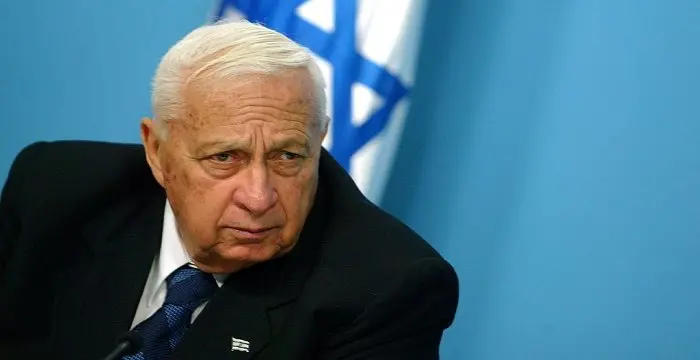
Ariel Sharon - Prime Minister of Israel, Family and Life
Ariel Sharon's Personal Details
Ariel Sharon was an Israeli general and politician who later on served as the eleventh Prime Minister of Israel
| Information | Detail |
|---|---|
| Birthday | February 26, 1928 |
| Died on | January 11, 2014 |
| Nationality | Israeli |
| Famous | Leaders, Political Leaders, Prime Ministers, Military Leaders, Prime Minister of Israel |
| Spouses | Lily Sharon (m. 1963–2000), Margalit Sharon (m. 1953–1962) |
| Siblings | Yehudit Sheinerman |
| Childrens | Gilad Sharon, Omri Sharon |
| Universities |
|
| Birth Place | British Mandate of Palestine |
| Political Ideology | Kadima (formerly Likud and Shlomtzion) |
| Religion | Judaism |
| Gender | Male |
| Father | Shmuel Sheinerman |
| Mother | Dvora Scheinerman |
| Sun Sign | Pisces |
| Born in | British Mandate of Palestine |
| Famous as | Prime Minister of Israel |
| Died at Age | 85 |
// Famous Prime Minister of Israel
Benjamin Netanyahu
Benjamin Netanyahu is an Israeli politician currently serving as the Prime Minister of Israel. This biography of Benjamin Netanyahu provides detailed information about his childhood, life, achievements, works & timeline.
Ariel Sharon's photo
Who is Ariel Sharon?
Ariel Sharon was an Israeli general and politician who later on served as the eleventh Prime Minister of Israel; he was in the office from March 2001 to April 2006. Growing up in a hostile world, in the midst of the Israel-Arab conflict, Ariel became aware of the need for self-defense early in his life and joined Gadna at the age of fourteen. At the age of seventeen, he joined Haganah and contributed significantly to his country’s war of independence. Later as the Israel Defense Forces was formed, he started his career as a platoon commander in Alexandroni Brigade and was quickly promoted to the post of company commander of the Golani Brigade, achieving many victories before he retired as a Major General. Although some of his campaigns were highly controversial his strategies were mostly successful. Post retirement, he entered politics and served in many important positions before he became the Prime Minister of the country. The Israeli Disengagement from Gaza, which started the Arab-Israel peace process, is perhaps his most significant achievement as the country’s Prime Minister.
// Famous Leaders
Edi Rama
Edi Rama is the current Prime Minister of Albania. Check out this biography to know about his childhood, life, achievements, works & timeline.
Tecumseh
Tecumseh was a Native American leader of the Shawnee clan. This biography profiles his childhood, life and timeline.
Khalifa bin Zayed Al Nahyan
Sheikh Khalifa bin Zayed Al Nahyan is the current President of the United Arab Emirates (UAE). Check out this biography to know about his birthday, childhood, family life, achievements and fun facts about him.
Childhood & Early Life
Ariel Sharon was born as Ariel Scheinerman on February 26, 1928 at Kfar Malal, a Jewish Settlement located within the then British Mandate of Palestine, now part of Israel. His father, Shmuel Scheinerman, was originally from Brest-Litovsk while his mother, Dvora, was from Mogilev, both located in present day Belarus.
His parents met while they were studying at the university in Tiflis, then a part of Russia. To escape the growing persecution of Jews by the Communist regime, they emigrated to Kfar Malal with the Third Aliyah, as the third wave of Zionist immigration from Eastern Europe to Palestine is called.
Ariel was the younger of his parents’ two children, having an elder sister called Yehudit or Dita. As a child, he was proficient in both Hebrew and Russian.
In around 1933, when Ariel was five years old, the family was ostracized for taking independent stand in many important issues. Among other measures, they were expelled from the local synagogue, which helped him to grow up in a comparative secular environment.
Even as a young boy he became aware of the fact that they were not really safe in the politically turbulent environment, and had to be prepared to defend themselves. In 1938, as he turned ten, Ariel joined HaNoar HaOved VeHaLomed, a Labor Zionist movement for the young.
Then in 1942, he joined Gdudei No'ar (Gadna), an organization established for providing preliminary military training to young boys. Sometime now, he also started taking part in armed night patrols.
Thereafter in 1945, he joined Haganah, an underground Jewish paramilitary organization in the British Mandate of Palestine. Very soon he started taking part in active combat. Till then he used his original surname, Scheinerman.
Becoming Ariel Sharon
From the autumn of 1947, his unit, consisting of thirty men, started making hit-and-run raids on Arab forces around Kfar Malal. They also hit Arab villages and bases, destroying roads and ambushing traffic. Very soon, they were able to build up the strength required for more such operations.
Thereafter, the ambushes and raids closely followed one another and for his roles in these raids, Ariel was made a platoon commander in the Alexandroni Brigade sometime in 1948. By now he had become an aggressive soldier.
Later in the same year, his platoon took part in the First Battle of Latrun. During the course of the war he was shot in the groin, stomach, and foot. Although some sources claim that he was taken a prisoner and traded, he had never admitted that.
Nonetheless, he quickly recovered from his wounds and returned to take charge of his platoon. Sometime during the end of the year 1948, David Ben-Gurion, the founding father of the state of Israel, Hebraized his name into Sharon. From that point, he began to be known as Ariel Sharon.
Early Military Career
In September 1949, Sharon was promoted to the post of company commander of the Golani Brigade's reconnaissance unit. A few months later in early 1950, he became an intelligence officer for Central Command. One of his final operations during this period was the Operation Bin Nun Alef into Jordan.
In 1952, he took leave of absence to study history and Middle Eastern culture at the Hebrew University of Jerusalem. In the following year, he was recalled to establish a special task force capable of responding to the Palestinian fedayeen attacks. Some time now, he was also promoted to the post of Major.
In August 1953, the Commando Unit 101 was created with Major Sharon as its Commander. They undertook several raids in the West Bank, then held by Jordan. Such raids for the first time warned their enemies that Israel is capable of hitting back.
In October 1953, his troops attacked Qibya, a village located in the West Bank and used as a base by the Palestinian fedayeens. This was in retaliation of the Yehud attack, which killed an Israeli woman and her two children while they were sleeping in their home on October 12, 1953.
In response, Sharon’s troops dynamited forty-five civilian houses, a school and a mosque in Qibya. At least 65 Palestinian civilians, half of them women and children, were also killed. The incident, known as Qibya Massacre, drew international condemnation and Israel government denied that Israel army was involved in the incident.
In 1954, Unit 101 was merged with the 890 Paratroopers Battalion to create the Paratroopers Brigade. As its Commander, Sharon continued raiding into Arab territory; Operation Black Arrow, Operation Elkayam, Operation Egged, Operation Olive Leave, Operation Volcano, Operation Gulliver and Operation Lulav being some of the major raids commanded by him.
In late 1956, his paratroopers’ brigade was assigned to the Sinai Campaign, also known as the Suez Crisis with him as the Commander. During the campaign his brigade came under heavy firing and suffered heavy loss at the Mitla pass.
To save many of his men, he took unauthorized actions, which was later condemned by many in the military as insubordination. It hindered his progress in the army.
In 1957, he was sent to Staff College in Camberley, England, for officer training. On his return in 1958, Sharon was promoted to the post of colonel. Subsequently, he spent the next three years as senior administrative officer in the training division of the General Staff, heading the Infantry School.
Rising up the Ranks
In 1962, Ariel Sharon became brigade commander of the armored corps. Two years later in 1964, as Yitzhak Rabin became the Chief of Staff, he made Sharon the Chief of Staff at Northern Command headquarters.
Subsequently in 1966, he was made head of training division of the General Staff. In the same year, he received his degree in law from the University of Tel Aviv.
Thereafter in early 1967, he was promoted to the post of major-general or Aluf. Before the onset of the Six-Day-War on 5 June, Sharon, then the Commander of an armored division, was asked to defend the Sinai front.
Instead, he went offensive with a complex plan, involving infantry, tanks and paratrooper; winning the Battle of Abu-Ageila and occupying most of the Sinai area. Military researchers in USA and other countries found his strategies to be unique and he received international commendation for the operation.
In 1969, during the War of Attrition, Sharon was appointed the Head of IDF's Southern Command. As its leader, he had many decisive victories including the destruction of the fortress at the Green Island, which was used by the Egyptians to control the airspace of the whole sector.
In August 1973, Ariel Sharon retired from the army. But as the Yom Kippur War started on October 6, 1973, Sharon was recalled to active duty. He was now assigned to the reserve armored division and moving under the cover of darkness, his force crossed the Suez; thus effectively winning the war.
He then encircled the Egyptian Third Army, cutting off their supply line. Although it created some internal problems with Major General Avraham Adan, whose division was fighting in the same field, his actions were later found to be militarily effective and he was hailed as a hero.
Entering Politics
Soon after retiring in August 1973, Ariel Sharon joined the Liberal Party. Subsequently in September, he started working with opposition leader Menachem Begin to form Likud Party by merging several central-rights to right-wing elements.
Although he was elected the Chairman of the campaign committee, he had to abandon the post due to his recall to military duty. On his return, he contested the election on the Likud ticket and became a member of the Knesset (Israel's parliament) in December 1973.
Soon, after being frustrated by petty party politics, Sharon resigned from the Knesset in December 1974. Yitzhak Rabin, the then Prime Minister of Israel, then appointed him to a reserve command in the army. Concurrently, he served as his special adviser on counter-terrorism from June 1975 to March 1976.
In May 1977, after an unsuccessful bid to take over the leadership of the Likud party, Sharon founded a new political party, Shlomtzion. But soon after winning the election, he merged it with Likud, which then formed the government.
Sharon was now appointed the Minister of Agriculture. He used his power to initiate a program whereby more than 200 Jewish settlements were created in contested areas like the Gaza Strip.
As the Likud party won the 1981 election, Sharon was appointed the Defense Minister. He then went on to resume diplomatic ties with many African nations and helped many Ethiopian Jews to migrate to Israel.
In June 1982, Israel troops invaded Lebanon, mainly to drive out PLO leader Yasser Arafat and his forces, who had been camping at Beirut. To accomplish his goal, he allied with Bachir Gemayel, who at that time was heading a pro-Christian government.
But later as Gemayel was assassinated, his followers attacked the refugee camps in Sabra and Shatila, killing between 762 and 3,500 civilians, mostly Palestinians and Lebanese Shiite men, women, and children. It is believed Sharon could have stopped it; but he did nothing.
An enquiry into the incident in 1983 found him negligent in his duty. He was then removed from his position. However, Sharon remained in the cabinet as the minister without portfolio.
Later from 1984 to 1990, he served as the Minister of Industry and Trade. During this period, he was instrumental in signing the 1985 free trade agreement with the United States.
Thereafter from 1990 to 1992, he was minister for housing and construction. At that time, there was a new wave of immigrants coming to the country from Soviet Union and to house them, Sharon managed to build 144,000 new apartments.
Concurrently, he also played an important role at the Knesset. In 1990, he was elected a member of the Foreign Affairs and Defense Committee and also the Chairman of a committee that was set up to oversee Jewish immigration from the Soviet Union. He held both the positions until 1992.
In 1996, he became the Minister of National Infrastructure in Benjamin Netanyahu's government, a position he held up to 1998. Then from 1998 to 1999, he was the Foreign Minister in the same government.
As the Prime Minister
In 1999, as the Labor Party formed the government, Ariel Sharon was elected the Chairman of the Likud Party. He now started campaigning for the post of the Prime Minister.
On September 28, 2000, escorted by a huge troop, he went on a visit to the Temple Mount complex, which holds the Dome of the Rock and al-Aqsa Mosque. He also declared that from now on, the site would remain under Israel control.
While Temple Mount is the holiest place for the Jews it is also the third holiest site in Islam. Sharon’s visit naturally ignited a new wave of attacks by the Palestinians, which in turn made the Israelis aggressive. Therefore, when the election took place on 6 February 2001, Sharon won easily.
In the beginning, he continued with his hard-line policies, relentlessly working for the security of his country. In September 2001, he stated that Palestinians should have the right to establish their own land, but to the west of the Jordan River.
In 2002, he launched the Operation Defensive Shield, which was actually an intense military offensive in a number of Palestinian areas in response to suicide bombing by the Palestinians. He also authorized the construction of a barrier around the West Bank.
The Israeli Disengagement from Gaza
However, Ariel Sharon soon underwent a change of heart and in 2003 endorsed a US roadmap for peace between Israel and Palestine. Subsequently, he called for complete withdrawal of Israeli troops as well as settlers from the Gaza Strip. Although it angered many of his supporters he went on with his plan.
Between August 16 and August 30, 2005, he had more than 8,500 Israeli settlers evacuated from Gaza. The settlements were also destroyed. The Israel soldiers left the area on September 11, 2005; thus ending a 38-year presence.
As his move was unpopular within the Likud Party, he proposed to form a new party called Kadima. But before he could develop it, he suffered two strokes and became incapacitated.
Personal Life & Legacy
In 1947, Ariel Sharon met sixteen-year-old Margalit Zimmerman. The two got married in 1953 and had a son named Gur. She worked as a supervisory psychiatric nurse.
In May 1962, Margalit died when her car was hit by a truck on the Jerusalem-Tel Aviv highway. Five years later, in October 1967, Gur was accidentally shot by his friend while they were playing with a rifle in Sharon’s family home.
In 1963, a year after Margalit’s death, he married her younger sister Lily, with whom he had two sons Omri and Gilad. Lily died of lung cancer on 25 March 2000.
Since the 1980s, Sharon suffered from obesity, chronic high blood pressure and high cholesterol. He was a lover of food and was fond of smoking cigars. On December 18, 2005, Sharon suffered a minor ischemic stroke and was hospitalized.
Instead of resting, he returned to work immediately and suffered a hemorrhagic stroke on January 4, 2006. Thereafter, he underwent two surgeries. Although the bleeding was stopped, he entered into coma and remained in that state until his death on January 11, 2014.
From January 12, his body lay in state in the Knesset Plaza and the state funeral was held on January 13. Subsequently, he was buried beside his wife Lily at the family's ranch in the Negev Desert.
Camp Ariel Sharon, a complex of military bases under construction in southern Israel, has been named after him. Besides, the under-construction Ariel Sharon Park located outside Tel Aviv also bears his name. When finished, the park will be three times larger than the Central Park in New York.
// Famous Military Leaders
Sitting Bull
Sitting Bull was a Teton Dakota Indian chief who led Sioux tribes in their struggle for survival on the North American Great Plains.
Simon Bolivar
Simón Bolívar was a Venezuelan military leader who was instrumental in independence of several Latin American countries from the Spanish rule. This biography profiles his childhood, life, achievements and timeline.
Reinhard Heydrich
Reinhard Heydrich was a high-ranking German Nazi official during the World War II. Check out this biography to know about his childhood, family life, achievements and other facts about his life.
Ariel Sharon biography timelines
- // 26th Feb 1928Ariel Sharon was born as Ariel Scheinerman on February 26, 1928 at Kfar Malal, a Jewish Settlement located within the then British Mandate of Palestine, now part of Israel. His father, Shmuel Scheinerman, was originally from Brest-Litovsk while his mother, Dvora, was from Mogilev, both located in present day Belarus.
- // 1933In around 1933, when Ariel was five years old, the family was ostracized for taking independent stand in many important issues. Among other measures, they were expelled from the local synagogue, which helped him to grow up in a comparative secular environment.
- // 1938Even as a young boy he became aware of the fact that they were not really safe in the politically turbulent environment, and had to be prepared to defend themselves. In 1938, as he turned ten, Ariel joined HaNoar HaOved VeHaLomed, a Labor Zionist movement for the young.
- // 1942Then in 1942, he joined Gdudei No'ar (Gadna), an organization established for providing preliminary military training to young boys. Sometime now, he also started taking part in armed night patrols.
- // 1945Thereafter in 1945, he joined Haganah, an underground Jewish paramilitary organization in the British Mandate of Palestine. Very soon he started taking part in active combat. Till then he used his original surname, Scheinerman.
- // 1947From the autumn of 1947, his unit, consisting of thirty men, started making hit-and-run raids on Arab forces around Kfar Malal. They also hit Arab villages and bases, destroying roads and ambushing traffic. Very soon, they were able to build up the strength required for more such operations.
- // 1947In 1947, Ariel Sharon met sixteen-year-old Margalit Zimmerman. The two got married in 1953 and had a son named Gur. She worked as a supervisory psychiatric nurse.
- // 1948Thereafter, the ambushes and raids closely followed one another and for his roles in these raids, Ariel was made a platoon commander in the Alexandroni Brigade sometime in 1948. By now he had become an aggressive soldier.
- // 1948Nonetheless, he quickly recovered from his wounds and returned to take charge of his platoon. Sometime during the end of the year 1948, David Ben-Gurion, the founding father of the state of Israel, Hebraized his name into Sharon. From that point, he began to be known as Ariel Sharon.
- // 1949 To 1950In September 1949, Sharon was promoted to the post of company commander of the Golani Brigade's reconnaissance unit. A few months later in early 1950, he became an intelligence officer for Central Command. One of his final operations during this period was the Operation Bin Nun Alef into Jordan.
- // 1952In 1952, he took leave of absence to study history and Middle Eastern culture at the Hebrew University of Jerusalem. In the following year, he was recalled to establish a special task force capable of responding to the Palestinian fedayeen attacks. Some time now, he was also promoted to the post of Major.
- // 1953In August 1953, the Commando Unit 101 was created with Major Sharon as its Commander. They undertook several raids in the West Bank, then held by Jordan. Such raids for the first time warned their enemies that Israel is capable of hitting back.
- // 12th Oct 1953In October 1953, his troops attacked Qibya, a village located in the West Bank and used as a base by the Palestinian fedayeens. This was in retaliation of the Yehud attack, which killed an Israeli woman and her two children while they were sleeping in their home on October 12, 1953.
- // 1954In 1954, Unit 101 was merged with the 890 Paratroopers Battalion to create the Paratroopers Brigade. As its Commander, Sharon continued raiding into Arab territory; Operation Black Arrow, Operation Elkayam, Operation Egged, Operation Olive Leave, Operation Volcano, Operation Gulliver and Operation Lulav being some of the major raids commanded by him.
- // 1956In late 1956, his paratroopers’ brigade was assigned to the Sinai Campaign, also known as the Suez Crisis with him as the Commander. During the campaign his brigade came under heavy firing and suffered heavy loss at the Mitla pass.
- // 1957In 1957, he was sent to Staff College in Camberley, England, for officer training. On his return in 1958, Sharon was promoted to the post of colonel. Subsequently, he spent the next three years as senior administrative officer in the training division of the General Staff, heading the Infantry School.
- // 1962 To 1964In 1962, Ariel Sharon became brigade commander of the armored corps. Two years later in 1964, as Yitzhak Rabin became the Chief of Staff, he made Sharon the Chief of Staff at Northern Command headquarters.
- // 1962 To 1967In May 1962, Margalit died when her car was hit by a truck on the Jerusalem-Tel Aviv highway. Five years later, in October 1967, Gur was accidentally shot by his friend while they were playing with a rifle in Sharon’s family home.
- // 1963In 1963, a year after Margalit’s death, he married her younger sister Lily, with whom he had two sons Omri and Gilad. Lily died of lung cancer on 25 March 2000.
- // 1966Subsequently in 1966, he was made head of training division of the General Staff. In the same year, he received his degree in law from the University of Tel Aviv.
- // 1967Thereafter in early 1967, he was promoted to the post of major-general or Aluf. Before the onset of the Six-Day-War on 5 June, Sharon, then the Commander of an armored division, was asked to defend the Sinai front.
- // 1969In 1969, during the War of Attrition, Sharon was appointed the Head of IDF's Southern Command. As its leader, he had many decisive victories including the destruction of the fortress at the Green Island, which was used by the Egyptians to control the airspace of the whole sector.
- // 1973In August 1973, Ariel Sharon retired from the army. But as the Yom Kippur War started on October 6, 1973, Sharon was recalled to active duty. He was now assigned to the reserve armored division and moving under the cover of darkness, his force crossed the Suez; thus effectively winning the war.
- // Aug 1973Soon after retiring in August 1973, Ariel Sharon joined the Liberal Party. Subsequently in September, he started working with opposition leader Menachem Begin to form Likud Party by merging several central-rights to right-wing elements.
- // Dec 1974 To Mar 1976Soon, after being frustrated by petty party politics, Sharon resigned from the Knesset in December 1974. Yitzhak Rabin, the then Prime Minister of Israel, then appointed him to a reserve command in the army. Concurrently, he served as his special adviser on counter-terrorism from June 1975 to March 1976.
- // May 1977In May 1977, after an unsuccessful bid to take over the leadership of the Likud party, Sharon founded a new political party, Shlomtzion. But soon after winning the election, he merged it with Likud, which then formed the government.
- // 1981As the Likud party won the 1981 election, Sharon was appointed the Defense Minister. He then went on to resume diplomatic ties with many African nations and helped many Ethiopian Jews to migrate to Israel.
- // Jun 1982In June 1982, Israel troops invaded Lebanon, mainly to drive out PLO leader Yasser Arafat and his forces, who had been camping at Beirut. To accomplish his goal, he allied with Bachir Gemayel, who at that time was heading a pro-Christian government.
- // 1984 To 1990Later from 1984 to 1990, he served as the Minister of Industry and Trade. During this period, he was instrumental in signing the 1985 free trade agreement with the United States.
- // 1990 To 1992Thereafter from 1990 to 1992, he was minister for housing and construction. At that time, there was a new wave of immigrants coming to the country from Soviet Union and to house them, Sharon managed to build 144,000 new apartments.
- // 1990 To 1992Concurrently, he also played an important role at the Knesset. In 1990, he was elected a member of the Foreign Affairs and Defense Committee and also the Chairman of a committee that was set up to oversee Jewish immigration from the Soviet Union. He held both the positions until 1992.
- // 1996 To 1999In 1996, he became the Minister of National Infrastructure in Benjamin Netanyahu's government, a position he held up to 1998. Then from 1998 to 1999, he was the Foreign Minister in the same government.
- // 1999In 1999, as the Labor Party formed the government, Ariel Sharon was elected the Chairman of the Likud Party. He now started campaigning for the post of the Prime Minister.
- // 28th Sep 2000On September 28, 2000, escorted by a huge troop, he went on a visit to the Temple Mount complex, which holds the Dome of the Rock and al-Aqsa Mosque. He also declared that from now on, the site would remain under Israel control.
- // 2001In the beginning, he continued with his hard-line policies, relentlessly working for the security of his country. In September 2001, he stated that Palestinians should have the right to establish their own land, but to the west of the Jordan River.
- // 6th Feb 2001While Temple Mount is the holiest place for the Jews it is also the third holiest site in Islam. Sharon’s visit naturally ignited a new wave of attacks by the Palestinians, which in turn made the Israelis aggressive. Therefore, when the election took place on 6 February 2001, Sharon won easily.
- // 2002In 2002, he launched the Operation Defensive Shield, which was actually an intense military offensive in a number of Palestinian areas in response to suicide bombing by the Palestinians. He also authorized the construction of a barrier around the West Bank.
- // 2003However, Ariel Sharon soon underwent a change of heart and in 2003 endorsed a US roadmap for peace between Israel and Palestine. Subsequently, he called for complete withdrawal of Israeli troops as well as settlers from the Gaza Strip. Although it angered many of his supporters he went on with his plan.
- // 30th Aug 2005Between August 16 and August 30, 2005, he had more than 8,500 Israeli settlers evacuated from Gaza. The settlements were also destroyed. The Israel soldiers left the area on September 11, 2005; thus ending a 38-year presence.
- // 18th Dec 2005Since the 1980s, Sharon suffered from obesity, chronic high blood pressure and high cholesterol. He was a lover of food and was fond of smoking cigars. On December 18, 2005, Sharon suffered a minor ischemic stroke and was hospitalized.
- // 4th Jan 2006 To 11th Jan 2014Instead of resting, he returned to work immediately and suffered a hemorrhagic stroke on January 4, 2006. Thereafter, he underwent two surgeries. Although the bleeding was stopped, he entered into coma and remained in that state until his death on January 11, 2014.
// Famous Political Leaders
Edi Rama
Edi Rama is the current Prime Minister of Albania. Check out this biography to know about his childhood, life, achievements, works & timeline.
Khalifa bin Zayed Al Nahyan
Sheikh Khalifa bin Zayed Al Nahyan is the current President of the United Arab Emirates (UAE). Check out this biography to know about his birthday, childhood, family life, achievements and fun facts about him.
Leo Varadkar
Cam Leo Varadkar is the current Taoiseach—the Prime Minister—of the Republic of Ireland. Check out this biography to know about his childhood, family life, achievements and other facts about his life.
Strom Thurmond
Strom Thurmond was an American politician, who represented the state of South Carolina in the United States senate for 48 years.
Solon
Solon was an Athenian lawmaker, poet and politician. He is considered as one of the ‘Seven Wise Men’ in Greek culture. This biography provides detailed information about his childhood, life, career, works, achievements and timeline.
Mohammed bin Salman
Mohammed bin Salman is the Crown Prince of Saudi Arabia and the heir apparent to the throne. Check out this biography to know about his childhood, family life, achievements and other facts about him.
Ariel Sharon's FAQ
What is Ariel Sharon birthday?
Ariel Sharon was born at 1928-02-26
When was Ariel Sharon died?
Ariel Sharon was died at 2014-01-11
Where was Ariel Sharon died?
Ariel Sharon was died in Tel Aviv, Israel
Which age was Ariel Sharon died?
Ariel Sharon was died at age 85
Where is Ariel Sharon's birth place?
Ariel Sharon was born in British Mandate of Palestine
What is Ariel Sharon nationalities?
Ariel Sharon's nationalities is Israeli
Who is Ariel Sharon spouses?
Ariel Sharon's spouses is Lily Sharon (m. 1963–2000), Margalit Sharon (m. 1953–1962)
Who is Ariel Sharon siblings?
Ariel Sharon's siblings is Yehudit Sheinerman
Who is Ariel Sharon childrens?
Ariel Sharon's childrens is Gilad Sharon, Omri Sharon
What was Ariel Sharon universities?
Ariel Sharon studied at Hebrew University of Jerusalem, Tel Aviv University
What is Ariel Sharon's political ideology?
Ariel Sharon's political ideology is Kadima (formerly Likud and Shlomtzion)
What is Ariel Sharon's religion?
Ariel Sharon's religion is Judaism
Who is Ariel Sharon's father?
Ariel Sharon's father is Shmuel Sheinerman
Who is Ariel Sharon's mother?
Ariel Sharon's mother is Dvora Scheinerman
What is Ariel Sharon's sun sign?
Ariel Sharon is Pisces
How famous is Ariel Sharon?
Ariel Sharon is famouse as Prime Minister of Israel

